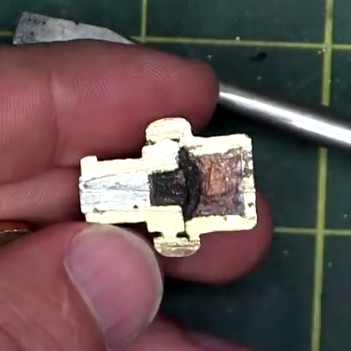We’d wager most readers aren’t intimately acquainted with wax motors. In fact, a good deal of you have probably never heard of them, let alone used one in a project. Which isn’t exactly surprising, as they’re very niche and rarely used outside of HVAC systems and some appliances. But they’re fascinating devices, and once you’ve seen how they work, you might just figure out an application for one.
 [AvE] recently did a complete teardown on a typical wax motor, going as far as cutting the thing in half to show the inner workings. Now we’ve seen some readers commenting that everyone’s favorite foul-mouthed destroyer of consumer goods has lost his edge, that his newer videos are more about goofing off than anything. Well we can’t necessarily defend his signature linguistic repertoire, but we can confidently say this video does an excellent job of explaining these little-known gadgets.
[AvE] recently did a complete teardown on a typical wax motor, going as far as cutting the thing in half to show the inner workings. Now we’ve seen some readers commenting that everyone’s favorite foul-mouthed destroyer of consumer goods has lost his edge, that his newer videos are more about goofing off than anything. Well we can’t necessarily defend his signature linguistic repertoire, but we can confidently say this video does an excellent job of explaining these little-known gadgets.
The short version is that a wax motor, which is really a linear actuator, operates on the principle that wax expands when it melts. If a solid block of wax is placed in a cylinder, it can push on a piston during the phase change from solid to liquid. As the liquid wax resists compression, the wax motor has an exceptionally high output force for such a small device. The downside is, the stroke length is usually rather short: for the one [AvE] demonstrates, it’s on the order of 2 mm.
By turning heat directly into mechanical energy, wax motors are often used to open valves and vents when they’ve reached a specific temperature. The common automotive engine thermostat is a classic example of a wax motor, and they’re commonly found inside of dishwashers as a way to open the soap dispenser at the proper time during the cycle.
This actually isn’t the first time we’ve featured an in-depth look at wax motors, but [AvE] actually cutting this one in half combined with the fact that the video doesn’t look like it was filmed on a 1980’s camera makes it worth revisiting the subject. Who is going to build a wax motor power device for the Power Harvesting Challenge in the 2018 Hackaday Prize?











